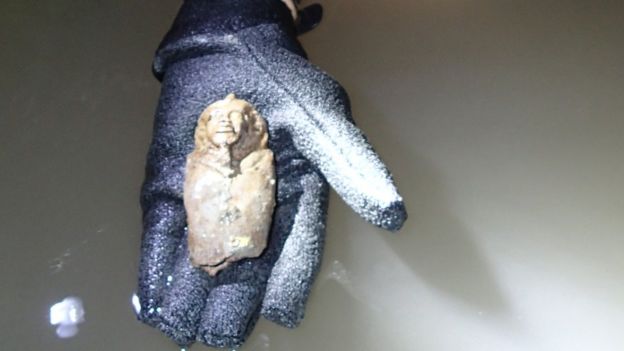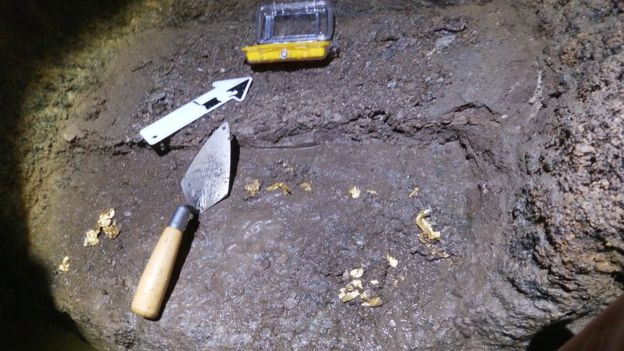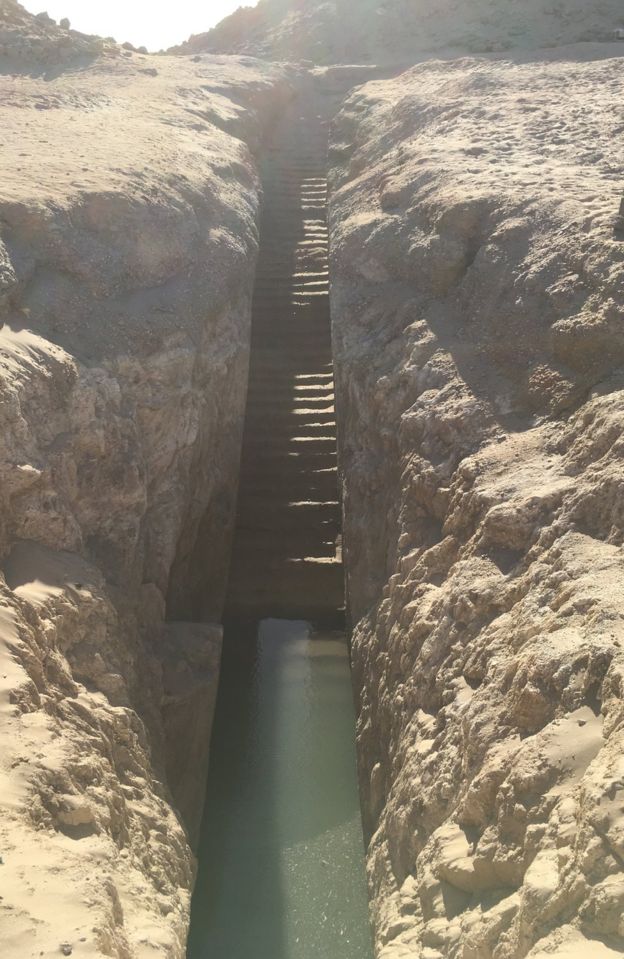https://www.bbc.com/news/world-africa-48867830
Sudan tomb diver reveals pharaoh's secrets
An underwater archaeologist has told the BBC of the extraordinary lengths he went to to access a pharaoh's tomb underneath a pyramid.
Pearce Paul Creasman and his team were the first people to go into the tomb for 100 years and, in that time, it has become harder to access because of the rising water level.
Mr Creasman told BBC Newsday that this was the first time underwater archaeology had been carried out in Sudan, the location of the ancient royal burial site of Nuri.
He found pottery figurines and gold leaf.
Image copyright Nuri Archaeological Expedition/PearcePaulCreasman

Image copyright Nuri Archaeological Expedition/PearcePaulCreasman
"The gold offerings were still sitting there - these small glass-type statues had been leafed in gold. And while the water destroyed the glass underneath, the little gold flake was still there," he told Newsday.
He believes these offerings were for Nastasen, a minor pharaoh who ruled the Kush kingdom from 335 BC to 315 BC.
This gold leaf would have been taken by thieves if it weren't for the rising water level making the tomb inaccessible to most, underwater archaeologist Kristin Romey writes in the National Geographic.
Mr Creasman told the BBC that the team "dug as far as we could" down a 65-step stairway which led to the tomb entry but "we got about 40 stairs down until we hit the water table and knew we wouldn't be able to go any further without putting our heads under".

Image copyright Nuri Archaeological Expediton/PearcePaulCreasman
Normal scuba tanks "would have been too cumbersome", he said, so instead they used a hose that pumped oxygen from the surface on the dive in January.
He described what he found as "remarkable":
"There are three chambers, with these beautiful arched ceilings, about the size of a small bus, you go in one chamber into the next, it's pitch black, you know you're in a tomb if your flash lights aren't on. And it starts revealing the secrets that are held within."
The tomb is part of the ancient site of Nuri which is spread across more than 170 acres in northern Sudan.
These pyramids mark the burials of Kushite royals who are sometimes referred to as "black pharaohs". The Kush kingdom lasted for many hundreds of years and, in the 8th Century BC, it conquered Egypt which it ruled for almost a century.

Image copyright Nuri Archaeological Expedition/PearcePaulCreasman
One difference between the pyramids in Sudan and the much more famous pyramids in Egypt is that the kings were buried below them, instead of inside.
-- Sent from my Linux system.

No comments:
Post a Comment